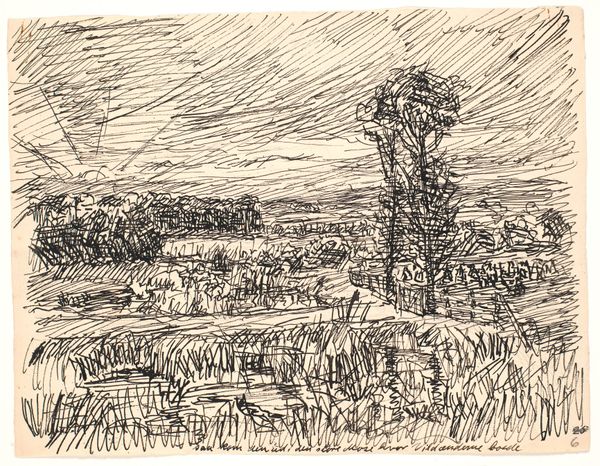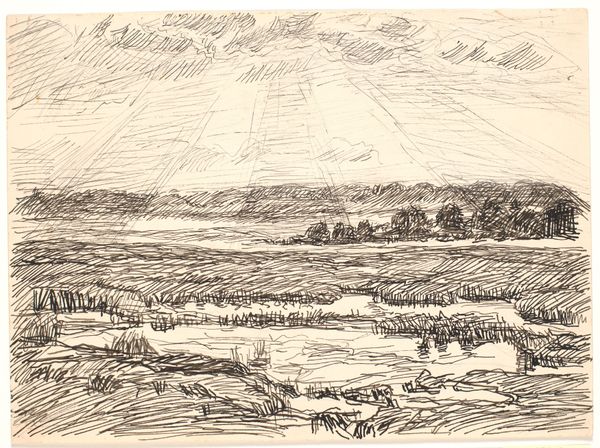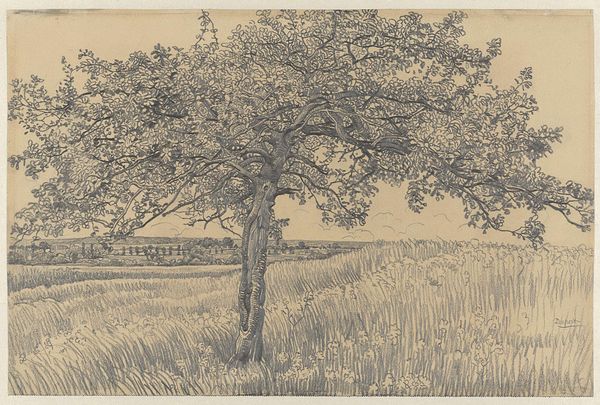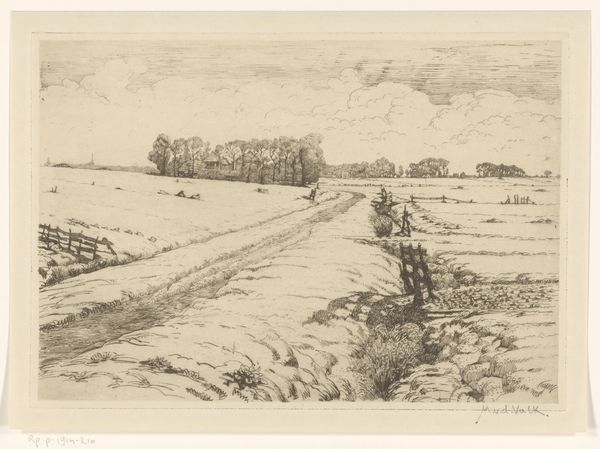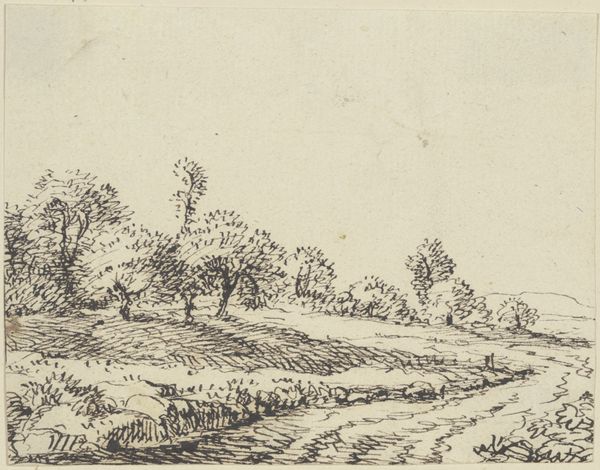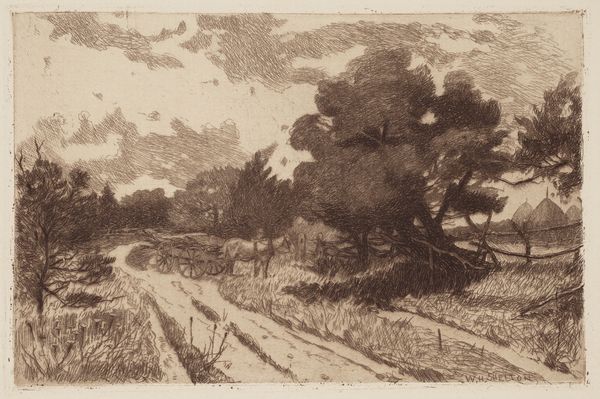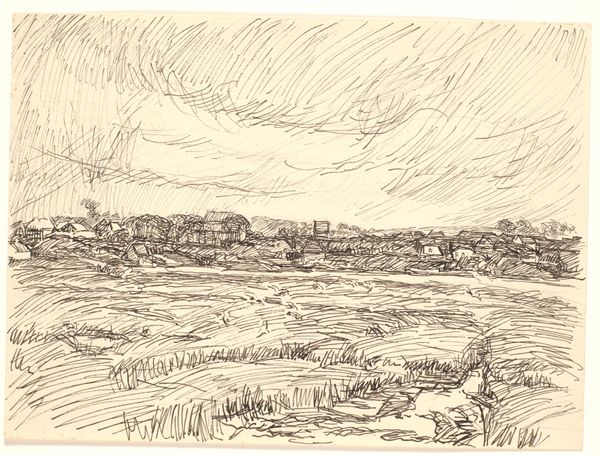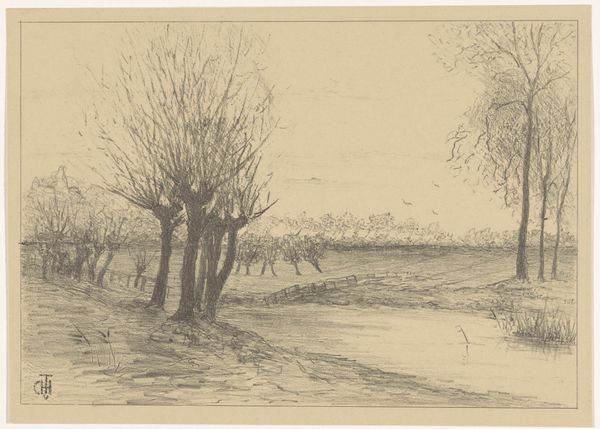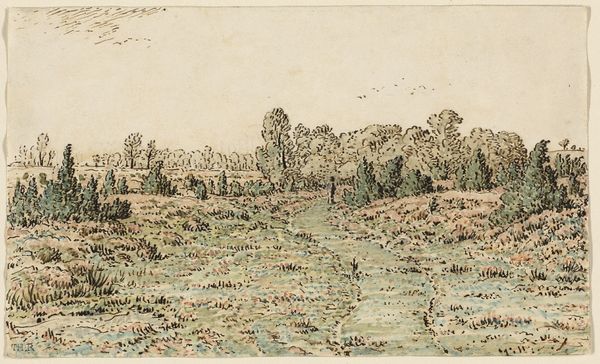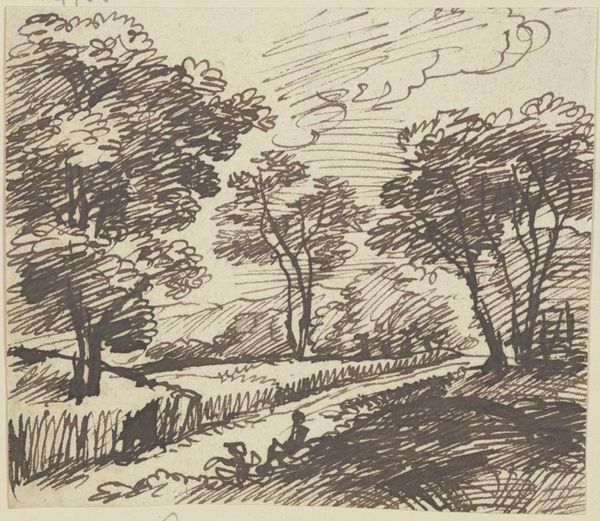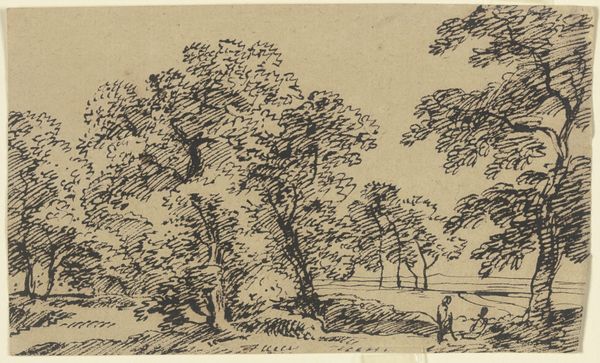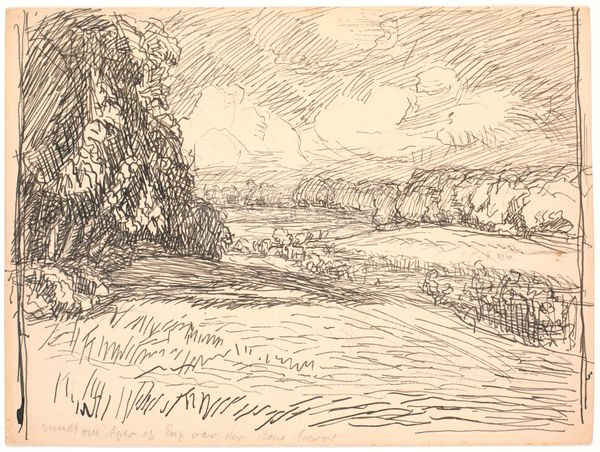
drawing, print, etching
#
drawing
# print
#
etching
#
landscape
#
etching
Dimensions: 51 × 110 mm (image); 53 × 112 mm (sheet)
Copyright: Public Domain
Charles Jacque’s etching, "Wheat Field," from 1849, offers us a pastoral scene dominated by the ripe abundance of a wheat field. Wheat, beyond its literal presence here, has been a potent symbol across cultures—denoting fertility, harvest, and divine provision. Consider its echoes: from the ancient Egyptian rites honoring the grain goddess to its role in Christian Eucharist, where bread, made from wheat, symbolizes spiritual sustenance. Observe the solitary figure walking the narrow path, a motif resonating with life's journey. This symbol reappears throughout art history in various guises. Our connection to symbols like wheat is not merely intellectual; it resonates on a deeper, almost subconscious level. The archetypal image of the harvest taps into a collective memory of cyclical renewal and communal survival. The golden field evokes feelings of warmth and security. The cyclical nature of symbols like wheat—planting, growth, harvest, and replanting—mirrors the perpetual rhythm of human experience, ensuring its resurgence in art across different eras.
Comments
No comments
Be the first to comment and join the conversation on the ultimate creative platform.
